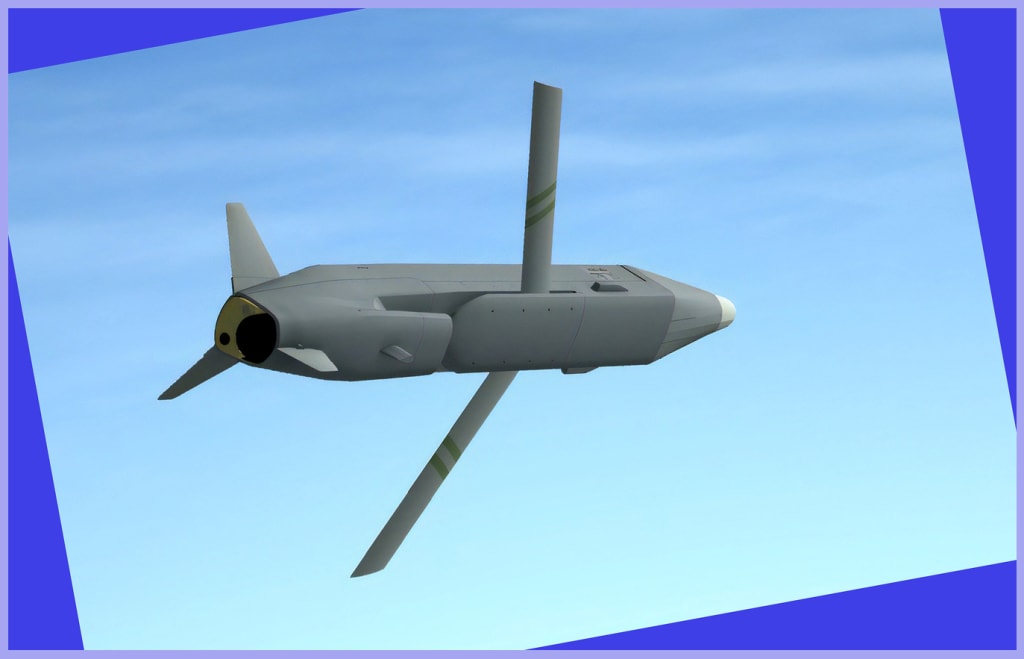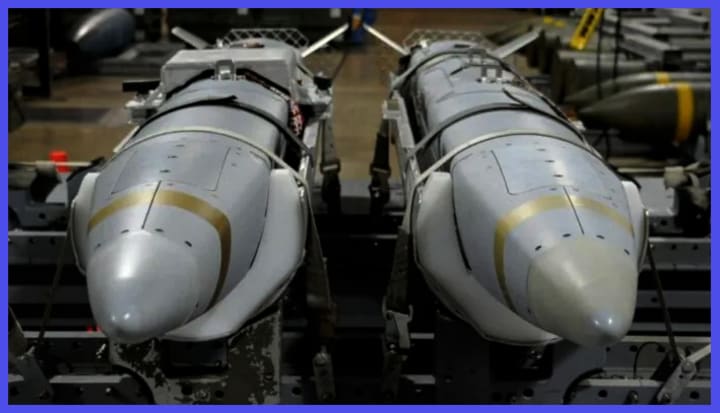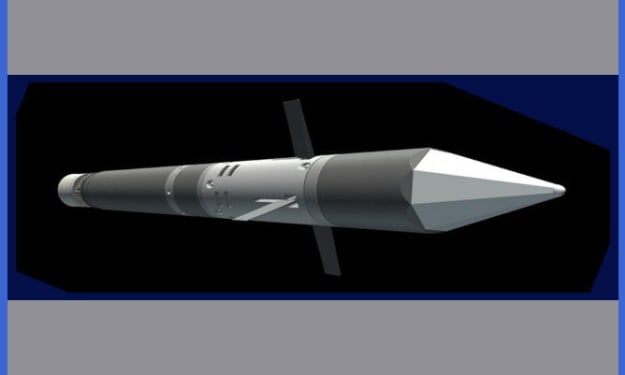The Game-Changing ADM-160 MALD System: A Closer Look
By AirPra

The Miniature Air-Launched Decoy (MALD) is a sophisticated air-launched, expendable decoy missile designed to protect aircraft from enemy air defences. Let's Delve into the Best of the ADM-160 MALD System: compact and lightweight, it can be carried in multiples by fighter jets. Once launched, the MALD operates autonomously, mimicking the radar signature and flight characteristics of various aircraft types, diverting enemy attention away from the actual aircraft. Equipped with advanced electronic warfare systems, it can replicate electronic emissions, enhancing its effectiveness.
The MALD can follow pre-programmed flight paths or react to real-time threats independently. It uses gradient-index optics to create a radar cross-section that simulates allies' aircraft, stimulating, confusing, and degrading the capability of missile defence systems. Its versatility allows it to simulate different aircraft types, from fighters to reconnaissance platforms, adapting to various mission scenarios.
By diverting enemy resources towards the decoy, the MALD increases the survivability of manned aircraft and improves mission success. Overall, the ADM-160 MALD System serves as a vital tool for enhancing aircraft survivability and operational effectiveness in hostile environments, specifically in SEAD (Suppression of Enemy Air Defenses) operations.

Development of the ADM-160 MALD
The inception of the Miniature Air-Launched Decoy (MALD) program dates back to 1995, initiated by DARPA to create a small, cost-effective decoy missile to counter Enemy Air defence suppression. The program garnered interest from the US Air Force, which intended to procure several thousand system units. In 1996, Teledyne Ryan, an Aeronautical Company, secured a development contract for the ADM-160A. Subsequently, the inaugural test flight occurred in 1999, marking a significant milestone in the program's progress. By 2001, the evaluation phase had concluded, paving the way for further advancements.
Regrettably, as per USAF standards, the parameters were not met, leading to a reduction to a maximum of 150 for a System Development and Demonstration (SDD) program. However, in 2002, the USAF terminated the program due to the drone's inability to fulfil the service's range and endurance requirements and perform other missions.

Consequently, the USAF revived its interest in an air-launched decoy and initiated a new industry-wide competition for a variant with increased endurance. The contract for the new MALD was granted to Raytheon in the spring of 2003. Raytheon Company played a pivotal role in the development of the MALD system, encompassing the design, engineering, and integration of its components. The development process entailed thorough testing and refinement to guarantee the system's effectiveness and reliability in real-world scenarios.
The Raytheon-produced ADM-160B shares a similar configuration with the ADM-160A, but features a trapezoidal fuselage cross-section and is larger and heavier. The first ADM-160B was delivered in the spring of 2009. The USAF plans to procure approximately 1,500 units of the system. Over the years, the MALD underwent several iterations and upgrades aimed at enhancing its capabilities and addressing emerging threats. These efforts included enhancements to its electronic warfare systems, flight performance, and autonomy features.
In 2008, Raytheon secured a contract to develop a jamming variant known as MALD-J. Its initial freefall test occurred in 2009, and it completed its critical design review in early 2010. The Air Force received the first MALD-J on September 6, 2012. Raytheon initiated operational testing on September 24, achieving success with all four flights launched. By April 2015, the MALD-J had concluded operational testing, meeting all requirements through 42 flight tests conducted over the previous two years.

In November 2012, Raytheon concluded ground verification tests for both the MALD and MALD-J for potential integration onto the MQ-9 Reaper UAV. Integration onto the aircraft was anticipated by 2013, aiming to achieve an unmanned suppression of enemy air defence capability. Additionally, the company has investigated integration into the MQ-1 Predator and the U.S. Army MQ-1C Gray Eagle.
In June 2013, Raytheon completed the MALD's four-year development program under budget, with both MALD and MALD-J passing all 30 flight tests. By May 2014, Raytheon delivered the 1,000th MALD-J to the Air Force. The MALD program maintained a flawless record of 33 successful flight tests over the past two years.

In December 2014, a newer version of the MALD-J underwent a test flight with a radio data link to enhance situational awareness and enable in-flight targeting adjustments. During a jamming mission, the MALD-J transmitted situational awareness data to the EW Battle Manager, facilitating mission adjustments while airborne. Currently, its launch platform has been integrated with all major operational fighters and UCAVs, including the F-15 Eagle, F-16 Fighting Falcon, F-35 Lightening II, A-10 WorthHog, B-1B Lancer, B-52 Staratofortress, C-130 Super Hercules, P-8A Poseidon, MQ-1 Predator, and MQ-9 Reaper.
In its entirety, the evolution of the ADM-160 MALD system epitomizes a collective endeavour involving the U.S. Air Force, Marines, Navy, and industry collaborators to forge an advanced decoy missile system. This system amplifies the resilience and efficiency of air operations within challenging and contested environments.

Design of the ADM-160 MALD
It features a compact and lightweight design optimized for air deployment and mission effectiveness. Its design incorporates several key elements to fulfil its role as an advanced decoy system:
- Miniaturization: The MALD is relatively small compared to traditional missiles, enabling fighter jets to carry multiple units without significantly affecting their performance or payload capacity. Its aerodynamic shape enhances flight performance and manoeuvrability.
- Electronic Warfare Systems: The MALD is outfitted with sophisticated electronic warfare systems, incorporating radar jammers and other countermeasure capabilities. The ADM-160B features a Signature Augmentation Subsystem (SAS), comprising various active radar enhancers that span a range of frequencies. This enables the SAS to mimic different aircraft, from the B-52 Stratofortress to the F-117 Nighthawk.
- Autonomous Operation: Following deployment from the host aircraft, the MALD operates autonomously, adhering to pre-programmed flight paths or reacting to immediate threats using its onboard sensors and systems. An Inertial Navigation System (INS) supported by GPS ensures the MALD stays on its designated course. While the trajectory is set before the aircraft takes off, the pilot retains the ability to adjust it up to the point of launch.
- Modular Payload: The MALD incorporates a modular payload design, facilitating the integration of diverse electronic warfare systems and payloads customized to meet specific mission demands. This adaptable feature empowers the MALD to adjust to changing threats and operational necessities. Equipped with folded wings for compact carriage, upon launch, the wings extend, and a TJ-50 turbojet propels the missile along a predetermined course comprising up to 100 different waypoints.
The MALD-J plays a pivotal role in the Navy's electronic warfare suite, delivering a crucial capability to safeguard carrier strike groups and other naval assets during operations. In July 2016, Raytheon was awarded a contract to develop an evolution of the MALD-J known as the MALD-X. This enhanced version incorporates an improved electronic warfare payload, the capability to fly at low altitudes, and an advanced net-enabled data link.
Raytheon aims to transition the MALD-X into the MALD-N for the U.S. Navy. With its compact size, multiple decoys can be carried and deployed by various naval aircraft, including the F/A-18E/F Super Hornet and F-35C Lightning II, bolstering the overall defensive posture and mission success of naval aviation forces.

Raytheon ADM-160B MALD Specifications
- Unit cost: US$322,000 (as of 2015)
- Weight: 115 kg (250 lb)
- Length: 9 ft 7 in (2.84 m)
- Width: 16.2 in (0.41 m)
- Wingspan: 5 ft 7 in (1.70 m)
- Speed: Subsonic, Mach 0.91
- Service ceiling: Over 40,000 ft (12,200 m)
- Range: Approximately 920 km (575 mi) with the ability to loiter over a target
- Guidance system: GPS, INS
- Endurance: Over 45 min at altitude
- Propulsion: Hamilton Sundstrand TJ-150 turbojet
- Launch platforms: F-15 Eagle, F-16 Fighting Falcon, F-35 Lightning II, A-10 Warthog, B-1B Lancer, B-52 Stratofortress, P-8A Poseidon, MQ-1 Predator, and MQ-9 Reaper. Future: C-130 Super Hercules, Eurofighter Typhoon, Gripen E
In conclusion, the ADM-160 MALD system, tailored for both the United States Air Force and Navy, represents a pinnacle in defensive technology. Its compact design, advanced electronic warfare capabilities, and autonomous operation make it a crucial asset for protecting aircraft and enhancing mission success in hostile environments, enabling effective SEAD operations.
Whether deployed by the Air Force or Navy, the MALD system serves as a force multiplier, providing critical decoy and jamming capabilities to deceive and disrupt enemy air defence systems. With its versatility and effectiveness, the MALD stands as a testament to ongoing advancements in military technology and the commitment to ensuring the safety and success of military operations.
Important Announcement for Our Valued Readers!
After an article is published, it is possible that updates or changes may have occurred beyond the time of publication. Therefore, it is important to be aware that certain information in the article might be outdated. To ensure the most accurate analysis, it is highly recommended to verify the content with the latest sources available.
However, we are dedicated to delivering outstanding articles on military products and global updates. Maintaining quality and smooth operation requires resources. Your support sustains our efforts in providing insightful content. By purchasing high-quality products through our affiliated links, you help us keep our platform alive and acquire top-notch items. Your unwavering support is invaluable and inspires us to strive further.
We welcome your suggestions and requests for more information, as we value feedback from our readers. If there's specific defence material or equipment not covered on our site, please share your request in the comments. We'll strive to research and provide the required information. We sincerely thank you for your unwavering interest in our website, and we eagerly anticipate hearing from you! Enjoy your reading experience!
About the Creator
Prajesh Majumdar
Hi there, I'm Prajesh, the creator of airpra.com
The site is dedicated to nurturing a community of individuals with a keen interest in exploring the intricate aspects of defence equipment and related news.






Comments
There are no comments for this story
Be the first to respond and start the conversation.